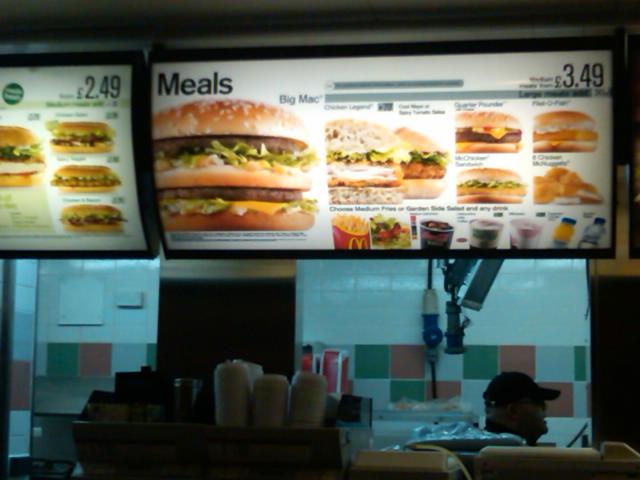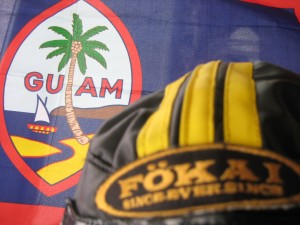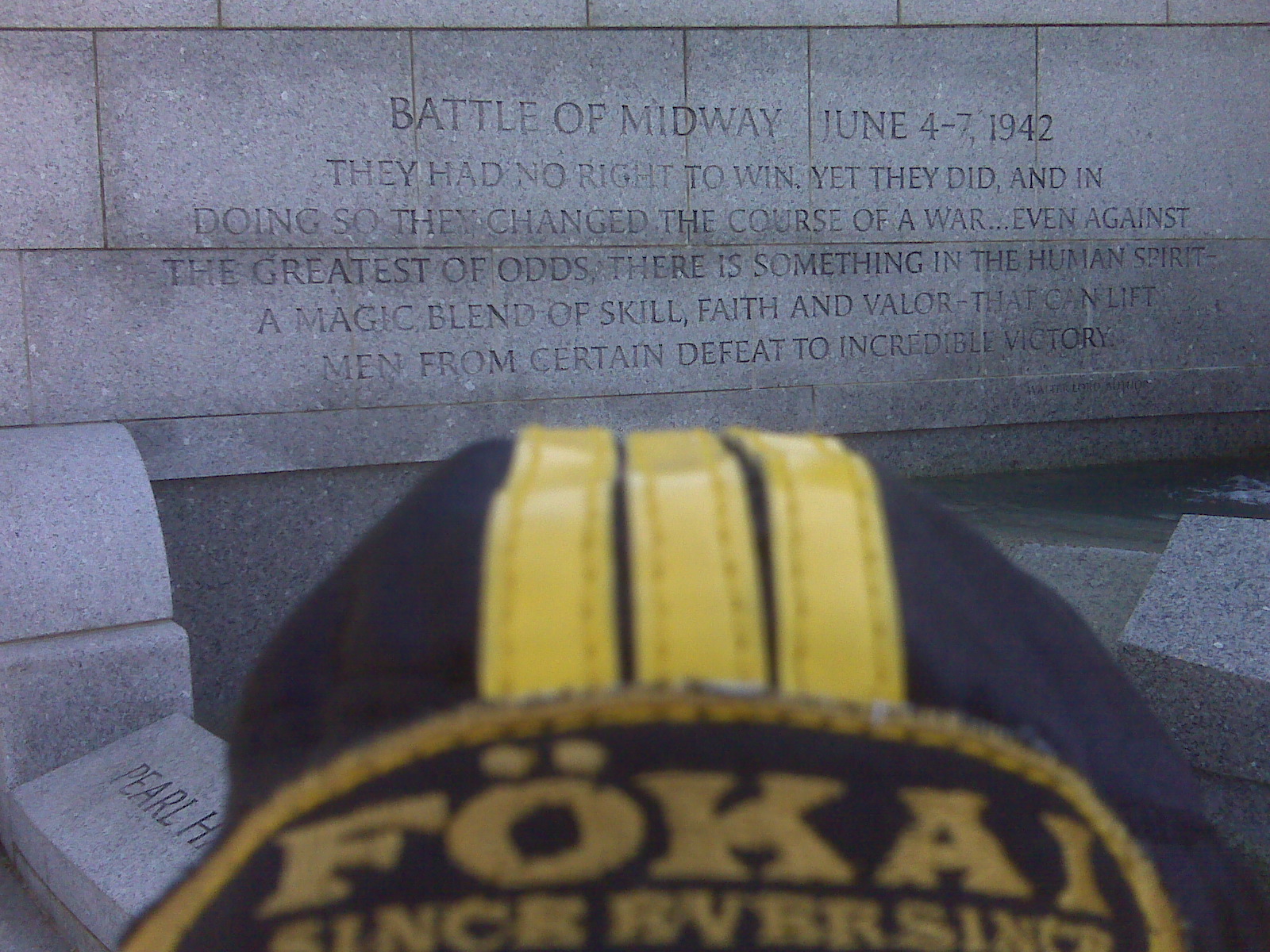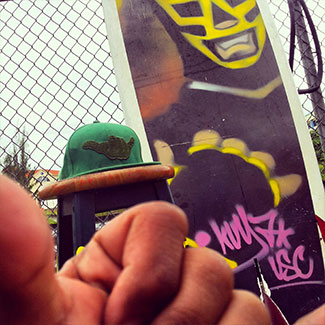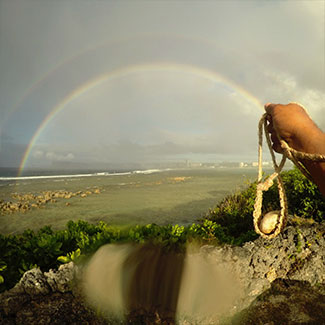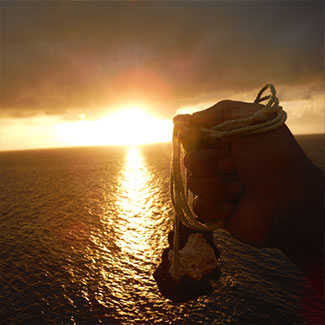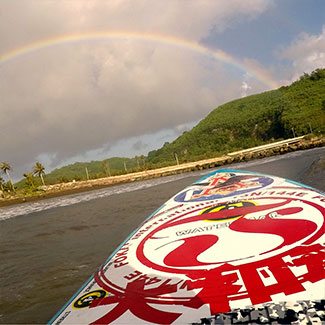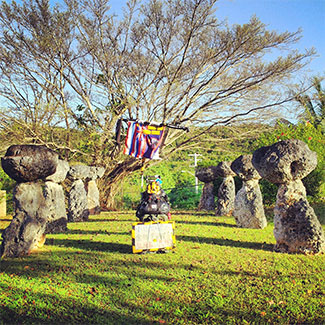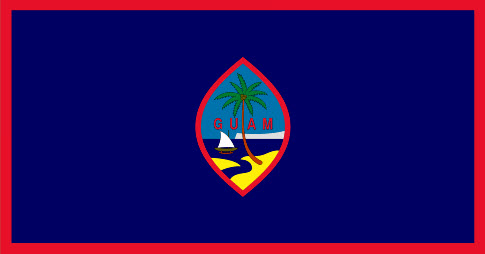PacMan,TheForce,&Money
January 20, 2014 by admin
Filed under 1008, EthicAndEtiquette, Onra
Copied and Pasted from www.yahoo.com
Manny Pacquiao challenges Floyd Mayweather to a fight for charity
By Carlo Pamintuan | Yahoo PH Sports – 4 hours ago
To prove he doesn’t want a fight against Floyd Mayweather for the money, Manny Pacquiao has offered a fight with proceeds going to charity. In an interview with Aquiles Zonio of inquirer.net, Pacquiao opened up about the verbal jabs being thrown his way.
“I’m not desperate to fight him just for the sake of money or material things. I’m not the one seeking this fight; rather it’s the boxing fans all over the world,” Pacquiao said in the interview.
ALSO READ: Mayweather says Pacquiao is desperate
“I am ready to submit myself to any kind of stringent drug testing. Above all, I challenge him to include in our fight contract that both of us will not receive anything out of this fight,” Pacquiao challenged. “We will donate all the proceeds from the fight—guaranteed prize, should there be any, gate receipts, pay-per-view and endorsements—to charities around the world.”
Pacquiao added that he is not desperate for a fight as what Mayweather is suggesting. He said he is comfortable about how his career holds up in boxing history. “There’s no reason why I should be desperate to fight him. But since boxing fans worldwide are seeking and demanding a Pacquiao-Mayweather fight, I don’t want to disappoint them,” he added.
ALSO READ: Roach pushing for Mayweather-Pacquiao in September
“As to my tax problem, my lawyers are fixing it already,” Pacquiao told Zonio. “I’m paying my taxes religiously. It is just a matter of reconciling our records with the tax agencies both here and abroad. Should there be any discrepancy, rest assured, I will settle it. I’m a lawmaker and I’m a law-abiding citizen.”
Reacting to Mayweather’s announcement that he will be retiring from boxing in September next year, Pacquiao shot back at Mayweather. “The public clamor for a Pacquiao-Mayweather bout is getting stronger. The only way he can avoid facing me in the ring is to retire from boxing,” Pacquiao said.
“Floyd, if you’re a real man, fight me,” Pacquiao closed. “Let’s do it for the love of boxing and for the fans. Let’s do it not for the sake of money. Let’s make the boxing fans happy.”
via Governor of Guam: Eddie Calvo
May 26, 2012 by admin
Filed under EthicAndEtiquette
GoodStuff:
Policy Speech on Federal Unfunded Mandates, Practical Considerations of U.S. Government Policy on Guam
Delivered in Okinawa
By Guam Governor Eddie Baza Calvo
May 22, 2012
Hafa adai and thank you for inviting me today,
Guam has a long tradition of military service … so much so that our sons and daughters have the highest enlistment rate in the United States. Since the Second World War, that generation of Guamanians passed down to the generation of today an unwavering patriotism and support for what the United States represents. Since then, we, like Okinawa, have hosted a large U.S. military presence. Okinawa accounts for less than 1% of the total area of Japan, yet 18% of your island is occupied by the U.S. military… and you host 75% of all the U.S. troops in the country. Similarly, on Guam, one-third of our island is owned and occupied by the U.S. military.
Okinawa has done much to focus attention on the heavy burden that it has had to bear to support such a large U.S. military presence. Guam has always welcomed the U.S. military .
Yet today, as our two islands move in opposite directions in their relationships with the U.S. military, recent events have marked a stark contrast in how our national governments view their relationships with each of us. The Noda Government and the Diet have continued their entreaties to the people of Okinawa in return for the sacrifices you make as you bear the bulk of the burden of the Security Treaty between the United States and Japan. The government of Japan is finally understanding your frustrations and reaching out to you. Your sovereign is helping you to build your infrastructure and to expand your tourism industry, not just to allay the impact of the treaty, but to help your economy grow.
Yet, on the other side of the Philippine Sea, on Guam, there is a certain irony in that, until recent, the only assurances we had that our infrastructure would be improved to absorb the military buildup came from Japan. Now that the number of Marines coming to Guam has been reduced, and the financial commitments of both countries have been adjusted, what was once certain has now become uncertain and ambiguous. We on Guam are left wondering whether anyone, even our own sovereign, will give Guam the practical financial offsets it needs to absorb the impact of the coming troops.
While the government of Japan is offering you assistance with your economy as you seek to reduce the U.S. presence of troops in Okinawa, we have to petition our federal government to do the same as it seeks to increase the U.S. presence of troops on Guam.
Our commitment to our sovereign is undiminished. Yet, I can’t help but question our sovereign’s commitment to us when it has unfairly treated us in the past and even today saddles us with severe unfunded federal mandates. Despite this, it has been slow to grant us the economic tools we need to improve our economy ourselves. Okinawa has made clear to Tokyo its feelings about how you have been unfairly treated in the past. Guam is also trying to make its voice heard in Washington, D.C.
Because we are less than a State, the U.S. government has often ignored the impact of some of its national decisions on us. As the most prominent example, over 25 years ago the United States signed a compact of free association with several Micronesian countries that created the most liberal immigration policy in recent memory. That compact promised to improve the economies of these Micronesian countries so they could be self-sustaining members of the global community. Instead, it created a rush of migration to Guam, without any significant assistance from our federal government to help us absorb the cost of this massive migration.
Guam belongs to a brotherhood of Pacific Islands, and we are a welcoming people. But when the unreimbursed cost of helping the migrants with public housing, public welfare, employment programs, education, and medical care exceeds 15% of our local government revenues, we can’t help but be angered. And this is not anger aimed at our island brothers and sisters, but at a national sovereign who fails to recognize the practical implications of its unmet obligations. How can any local government survive a 15% drain of its local revenues? How would Okinawa feel, how would it fare, if Tokyo imposed an immigration policy that immediately drained 15% of your local government revenues?
Our public programs are falling short in providing services to our residents because of this immigration policy. Instead of providing Guam with the corresponding funds to offset this impact, the U.S. government limits what we receive for federal social programs far below what it provides to every other State in the nation on a per-capita basis. And as we struggle to provide basic public services because of the federal burdens placed on us, , the U.S. government sues us for not providing such basic services as trash collection and disposal, water and waste water treatment, mental health care, and even housing prison inmates. This has forced us to borrow hundreds of millions of dollars, over a billion dollars in total, to meet the U.S. government’s demand on what is a minimally acceptable level of service for our people.
We, like you, have gone to our federal government asking it to treat us fairly… Asking it to help us absorb the cost of these federal mandates and immigration policies that drain so much of our local revenues. For over a decade, our pleas have fallen on deaf ears. Now we are being asked to absorb the additional cost of the U.S. Marines coming from Okinawa. You will understand the skepticism that I have when I am being told by the same government not to worry… to trust it to take care of the cost and the impact of the buildup. This is the same government that has ignored the financial impact of its previous mandates… that reduced our federal benefits to a fraction of what other citizens of the United States receive. My skepticism is such that I must tell you that I had more confidence in Japan’s commitment to help us improve our infrastructure than I have now in our own government.
But, still, we are a patriotic people. We love our country, and we are proud to be Americans. We are proud to play a role in preserving the security of our country, Japan, Asia and even the world. We just need our government to listen to our pleas to treat us fairly, as your government has begun to listen to your pleas.
As this buildup moves forward and you transition your economy to one less reliant on the U.S. military, we are transitioning ours to one that considers increased military spending. There are limitless opportunities between our communities.
Our sovereigns may have complete control over this buildup, but our economy is mature enough to ensure the viability of our island, if our government would let us control our own destiny.
Last summer, I testified before our U.S. Congress, and last week I wrote a letter to our President, asking them to help us by allowing us to help ourselves. Since taking office last year, I and my administration have worked unceasingly in trying to get our government to approve a China visa waiver program. This will allow Chinese visitors to come to Guam visa-free so that we can expand our tourism industry. So it was with great interest that I observed the Japan government’s efforts to help Okinawa expand its tourism industry by approving a multiple-entry China visa for Okinawa. Yet, on Guam, we continue to wait for our government to take action… To give us the opportunity to improve our economy ourselves. If we have to continue to absorb the cost of the existing unfunded federal mandates, and if we have to absorb the cost of the military buildup, we at least have a fighting chance with tourism.
As I have done in earlier trade missions to other parts of Asia, I am here to encourage all Okinawans, Japanese, Chinese, Koreans, Taiwanese, Russians, and everyone else in Asia, to visit our shores. I know that some will see Guam and Okinawa as competitors in the same tourism market. I prefer to see us as kin, sharing a common bond and a common aspiration. Sharing common experiences and frustrations with our respective national government. Sharing a similar history of an independent people who were first colonized and then incorporated into another nation. Sharing a similar identity of a people who are part of a larger country, yet who even after hundreds of years, still have a unique language and culture that distinguishes us from our parent country. On Guam, instead of saying “Welcome” we say “Hafa Adai.” In Okinawa, instead of saying “Yokoso” you say “Mensore.” We are an island culture – you are an island culture. There is something in being an islander that I think makes us more welcoming – maybe it’s the year-round sun and the sand that makes a people friendlier.
We have a lot in common, and perhaps that is what makes the economic potential between our communities so great. The geopolitical importance we’ve shared for the past half-a-century, though on separate sides of the Philippine Sea, can help shape a relationship and a mutual understanding of where we can go. We should seize this day as two communities who have been subjects of a sovereign, and who are proving to the world that we can build futures more reliant on what we can do for ourselves than what our national governments can do for us.
Thank you so much for your hospitality and for your time today. This will go down as one of the most memorable days of my tenure.
FokaiRoad:viaRDC&66Degrees
May 22, 2012 by admin
Filed under 1008, EthicAndEtiquette, Onra, Product Development, ProductDevelopment, Videos
A Video Edit by JohnnyH of 66degrees in discussion of the FokaiProductDevelopment
FokaiFemme:MariaDunn
August 6, 2010 by admin
Filed under EthicAndEtiquette, FokaiCombatUNit, FokaiFemme
In the women’s event, Maria Dunn earned her team’s second gold medal in her weight division, pinning Chuuk’s representative early in the first round.
With the win firmly in hand, Dunn gave credit to her opponent for stepping up a division and competing in a male-dominated sport.”When I first started competing, I was all about winning and beating everybody,” said the 24-year-old, who, despite her age, has competed at the international level several times over. “I’ve toned down a lot, and I’m more about the progression of women in competition.” “Some of these women are from the outer islands,” she said. “It takes a lot for them to break those barriers … to come out and compete.”
Truth:ToxicTestimonial13N144E
June 26, 2010 by admin
Filed under EthicAndEtiquette, Onra, Special Forces
—– Forwarded Message —-
From: EAC/HAC <ecris64@teleguam.net>
To: Anjen Dee <a8783@teleguam.net>
Sent: Fri, June 25, 2010 2:05:29 AM
Subject: Re: Toxic Testimonial from Navy Veteran stationed on Guam
Email Received : This Months Specials
C-4 #8
VetNet Headlines
New VetNet Poll Q.
Agent Orange Equity Act hits the Pay-Go wall
Benefit Buzz New on TV Hour
Veterans History Quiz
June 12, 2010
Subject: Re: Toxic Testimonial from Navy Veteran stationed on Guam
Lengthly personal account by Vancil Sanderson stationed 1966 on Guam. Read
comments, too.
http://veteransnetwork.net/newnote.php?id=01479261f8f25f7
08/13/07 3:13 pm
Van Sanderson
branch: Navy
comments:
My name is Vancil Sanderson and in 1966 I was a part of the illegal and
immoral experiments performed on military
personnel on Naval Station Guam, Cocos Island, Guam. A radioactive substance
was
being put into our food.
Many years later, 1983, I started having severe health problems. In 1993 I
was
forced to apply for SSD and for my service
connection. After 2 years of trying to get my military records,
Congresswoman
Barbara Vucanovich assisted me in getting my
records. We found out that the military had purged the records of the
experiment on
Cocos Island. Other parts of my records
were also purged. With the purging of my records I was forced to research my
military service to prove my case for disability
compensation and that it is service connected. The following is what I have
found
about the island of Guam and it\’s serious
contamination problem.
In 1944 the Battle for Guam was fought. Many men died on both sides. Almost
20,000
people were killed in the battle. About
5,000 US and 15,000 Japanese. The war in the Pacific was coming to a climax.
Guam
was a key part on the attack of Japan.
With all the dead on Guam and the war still raging a huge problem arose.
Filth Flies
and other disease carrying insects were
multiplying by the billions on all the dead. There weren\’t enough people to
do away
with all the bodies to stop the problem. The
answer to the problem was DDT. The island wide use started just after the
battle.
The entire island was sprayed by air day
after day, month after month. The use of DDT by air may have gone on for
years. DDT
was also used in the disposal of many
of the bodies. The bodies were DDT\’d, wrapped or bagged then DDT\’d, then
put in
graves and DDT\’d again. DDT wasn\’t the
only pesticide being used. DDT was used on Guam until it\’s ban.
Herbicides were being used in the building and maintenance of the
infrastructure of
Guam. I believe 10 military installations,
both Navy and Airforce, were built right after or during the war. Andersen
AFB is
the largest attack base in the world. It was
used in the bombing of Vietnam. There were numerous Navy installations as
well, NCS,
Barricada Station, Guam Naval
Complex(6 bases) and Naval Station Guam, Cocos Island. Herbs were used to
build
these bases and to maintain them. The
first herbicide used according to WWII veterans was Agent White. Veterans
have also
testified to the use of Agent Orange as
early as 1955. Guam was a staging area for Vietnam and was used to store the
rainbow
herbs. At least as early as the Korean
war the US was storing the rainbow herbicides on Guam. Agent Purple has been
reported by the DOD as having been stored
there during Korea, for use in Korea. I personnally am in contact with 5
vets who
used AO on Guam in the sixties, the earliest
being 1962 and the latest 1969. Veterans who worked in the storage areas of
Guam
have taken pictures of the various
herbicides. They have also written letters in support of the pictures and
also
stated they used these herbicides on Guam. It was
even used in aerial spraying according to veterans.
Silvex,2,4,5-TP, another of these herbicides can be found throughout the
drinking
water system of Guam, as well as 2,4-D,
2,4,5-T, 2,3,7,8-TCDD. The Northern Guam Lens Aquifer was the sole-source
drinking
water aquifer for Guam and is
contaminated by every substance the military had to offer and some. Fena
Lake is the
water supply for the Navy and the Fleet
that ported on Guam. The lake is surrounded by the Naval Magazine and is
contaminated. The only way for these substances
to get into the Northern Guam Lens Aquifer and Fena Lake is through military
use or
disposal. The aquifer, at the north end of
the island, was contaminated by the 3 bases that sit atop it, Andersen AFB,
NCS and
NAS. The first year tested for Silvex in
the aquifer was 1983 at the NCS wells. Silvex, which can contain more dioxin
than
Agent Orange, tested high at .21ppm. .05
is the MCL for Silvex.
Dioxin, the main substance of concern in these herbicides, can be found all
over the
island. The highest amount in the world
I have been able to find is on Andersen AFB. 19,000ppm in the soil. Higher
than
anywhere in Vietnam. This amount
represents, not just dioxin from herbicides, but from the disposal of dioxin
forming
substances by burning. Burning substances
like oil, organochlorine pesticides like DDT, fuels, PCB\’s and a host of
others.
These burning ponds were on Navy bases as
well. Wind patterns I have looked at for the island of Guam, would have been
sending
dioxin all over the island. During
Vietnam and after the amounts must have been astronomical. I know PCB\’s are
dioxin
forming when burned and the island of
Guam was not allowed to ship PCB\’s off island until 1993 or 94 per the EPA.
What
this means is that for years this substance
and many more were disposed of on Guam. It didn\’t change until the EPA came
into
being and it wasn\’t until 1978 the military
complex of Guam found they had a very serious problem with contamination.
Especially
in the drinking water.
What I have tried to describe is a very small island with a huge military
presence.
Pesticides were used in all facets of the
military, especially on these pacific islands. Insecticides like DDT were
used
against the disease carrying insects. Herbicides like
Agent Orange, Silvex and 2,4-D were used against the plant life. This is the
way the
military did things. Guam is just the worst
case scenario.
Next I found, starting with the Nuclear Weapons testing in the Pacific,
Operation
Crossroads, that Guam was used as a
staging area. Guam between 1946 and the end of the testing, 1963, was a part
of the
radiation zone for the testing in the
Pacific. It was also being used as a decontamination site for the ships of
the
testing. Apra Harbor and Cocos Lagoon were the
areas I found that were being used. (Cocos Island and lagoon tests high for
pcb\’s,265 times allowed and for Sr89 and 90 at
4121ppm on the base).Guam was also a storage area for contaminated munitions
from
the testing. Guam would have been
receiving radiation from the bomb testing by way of water, air and
contaminants from
the storage and decontamination. I would
like to take a quote from the \”Blue Ribbon Panel Committee Action Report\”
on
Guam.\”What was perpetrated against this
region was the largest ecological disaster in human history. This disaster
was no
less than the detonation of over 108,000
kilotons of nuclear explosive directly up jet stream of Guam. The amount of
contamination was 42 times the approximately 150
million curiesreleased as a result of testing in the United States of
America.\” The
report indicates that significant amounts of
fallout from the testing existed until about 1974. I know the US Government
had the
Univ. of Washington testing the food
supply, water and some vegetation from 1954 to about 1979. They have some of
the
samples archived. Other ways for
radioactive contamination would have also come from the decontamination of
planes.
As I have said Guam was a part of the
radiation zone and planes monitoring the bomb blasts followed and measured
the
fallout. The planes got pretty hot and some
times the planes had to sit on the runway area to cool down before
decontamination.
This runoff from the planes was ending up
in the aquifer as well. Radiation contamination was a fact on Guam and it
had many
sources.
Next is the contamination to the aquifer by way of military procedures or
the way
things were done for the time. The
number one contamination problem for the military on Guam may have been TCE.
Or it
would be better stated that the
synergistic effect of all the substances may be the big problem. Whatever
way you
look at it, it adds up to a lot of
contamination of the most toxic substances the military uses. And it was
running off
unabated into the water supply for Guam
and the fleet for at least 34 years. Feb. 1978 Andersen AFB, Guam, the
airforce
finds it has a serious problem with TCE
contamination to the water supply. The 11 wells of the Marbo Complex are
contaminated, some severely. TCE continued to
be a serious problem for the aquifer even after the discovery. The
military\’s only
way to combat the problem was to dilute the
wells. Take the water from less contaminated wells and mix with the severely
contaminated wells before consumption. Levels
even then were high. Dilution isn\’t a an efficient way to clean drinking
water. At
best it\’s a bandaid solution, if that. It wasn\’t until
about 1995 that the technology was developed and installed on Guam. This
technology
was developed for the military at
McClelland AFB, Calif in the late 80\’s.
While stationed on NCS, Guam in 1966 and 67 I could taste, see and smell
what
appeared to be a solvent in the drinking
water. According to ATSDR the level of TCE would have to have been at least
1,000,000ppb. What this means is that all the
levels of contaminants in the drinking water would have been much higher
than
indicated by the DOD. With my personal
knowledge and hearings held before congress in Nov. 1987, this shows the
contamination was extrememly high.(Page 84 of
the Mike Synar hearings before congress explains that all the readings
released by
the airforce for Andersen AFB were diluted
figures and didn\’t represent the true contamination levels of the
aquifer)GAO
reports for Guam support the dilution and when it
started. In the GAO April and May 1987 reports it is stated that base
commanders
immediately started dilution upon the
discovery of the contamination. It was discovered in Feb. 1978 and all
readings
after this time, Mar. 1978 on, were diluted.
What this means is that there was a lot of contamination going into the
aquifer and
ultimately being consumed by military and
civilian personnel.The TCE levels were a huge problem because of all the
types of
uses and how the military did things during
Vietnam and before. TCE was the solvent of choice and used to washdown
planes after
each flight. It was a mixture of TCE
and water. Andersen AFB was the largest attack base in the world and all
flights for
B-52\’s attacking Vietnam originated and
ended on Guam in 1965, 66 and into 67. This represents 1000\’s of flights
just for
the B-52\’s. After each sortie the planes are
washed down with the TCE mixture. The mixture then went into the drainage
system and
into the aquifer. Andersen\’s drainage
system and numerous dumby wells (Dumby wells were punched all over Andersen
for
better recharge of the aquifer. May be
as many as 200 of these wells) carried all the contamination directly to the
aquifer. Any contamination that didn\’t make it to the
drainage systems would have been runoff by the heavy rainfalls by way of the
many
sinkholes and dumby wells on the island.
These sinkholes provided rapid transfer of contaminants from the surface to
the
aquifer, per the GAO, and were all over the
island. The military was using some of these sinkholes as dumps. Some
drainage
systems were tied directly to the sinkholes and
dumby wells. I would venture to say over 100,000 flights of B-52\’s tookoff
from
Andersen. Add in all the other types aircraft
stationed, serviced and overhauled on Andersen and you could have had over a
1,000,000 planes done at Andersen just
during Vietnam. Veterans who worked on the flightline also have told me
after the
B-52\’s left on a sortie, the bunkers, where all
the prep work for the B-52\’s was done, were sprayed with the TCE mixture.
Every
bunker had a drainage system tied to the
main drain for the flightline. TCE was the most widely used solvent for all
airforce
operations.
The way the military handled it\’s toxic waste for years, was by dumping or
burning
and that was how it was done until the
80\’s. On Guam you have 3 military installations over the Northern Guam Lens
drinking water aquifer. One is Andersen AFB
which is an NPL site. The amount of contamination generated by Andersen
during
Vietnam would have been the highest in the
world. All of this had rapid transfer to the aquifer. This is substantiated
by the
PHA and bioenvironmental engineering well
reports for Andersen. The PHA shows how high dioxin and other toxics are on
Andersen, the highest amount being
19,000ppm of TCDD in the soil. The bioenvironmental reports show the array
of
chemicals. There are many other sites with
high amounts of dioxin. Site No. 31, Chemical Storage No. 4(CS-4), had
dioxin rates
as high as 130ppm. This site is
up-aquifer from NCS wells 1 and 1a(are now NCS A and B) The herbicide silvex
is in
high amounts in the NCS wells,
.21ppm per GEPA in 1983. Dioxin(2,3,7,8-TCDD), 2,4,-D, 2,4,5-T and many more
pesticides and chemicals can be found in
the NCS wells, still today. There can be no drift, because the north end of
this
island is all military all the time. Just ocean and
military. And the military is the only one using most of these substances.
The naval installations were also contaminating the aquifer, just not to the
extent
of Andersen. NCS and the NAS are
superfund sites. Quite possibly NAS should have been an NPL site. They did
things
the same way as Andersen, dump and
burn. Same types of toxic waste. Same washdown procedures that contaminated
the
environment. Same creation of dioxin by
burning. Used the same types of insectides and herbicides, for the most
part.
Applied and stored them the same. The Navy
was handling the toxic waste just as the airforce was, that was for the
times. This
is just the north end of the island and the
contamination to the sole-source drinking water aquifer.
The south end consists of the Guam Naval Complex, less the NAS. The Naval
Magazine
surrounds the drinking water
supply, Fena Lake, for the navy and the ships that ported on Guam. The
magazine is a
superfund site. All of the insecticides
and herbicides(pesticides) were used in the same manner as other military
installations. The base contaminated the environment
around it including the lake. This lake, during and after WWII, would have
been
sprayed with DDT for control of disease
carrying insects. Herbicides were used as well for control of weeds in and
around
the lake.
In all, the military is responsible for, and I believe this number is
growing, there
are 207 contaminated sites, 28 or more
superfund sites and 2 NPL sites on Guam. The island of Guam is about 30
miles long
by an average of 8 and 1/2 miles wide.
Massive amounts of pesticides were used in the military buildup and
maintenance of
the military complex on Guam. After the
complex was built it was expanded and the military controlled about 2/3\’s
of the
island at the pinnacle.
There are health problems that coincide with the military buildup,
neurodegenerative
disease. It has many names but is best
described by ALS/PDC. Neurodegenerative disease got to epidemic proportions
between
WWII and the middle 50\’s for
Guam natives, the Chamorro people. I know the DVA is studying this disease
in
military personnel, stationed on Guam, at the
VA center in Reno, Nevada. Same time frame. The study has been slowed due to
a high
response by veterans stationed on
Guam. The problem with the study is that it doesn\’t cover a broad enough
time
period. The Board of Veterans Appeals(BVA)
has found cases of Guam ALS in military personnel, who were stationed on
Guam, as
late as the early 70\’s. These aren\’t the
only health problems associated with Guam. According to David B. Cohen in
2004,
Deputy Assistant Secretary of the Interior
for Insular Affairs, about Guam, \”We see alarmingly high rates of diabetes,
hypertension, obesity and many types of cancer
and other diseases\”. I know in the Mike Synar hearings in 1987 the congress
was
initiating studies or already had of cancer, for
a base or bases on Guam. I am or have been in contact with maybe as many as
100
veterans, and or family members, and or
friends of these veterans who have these catastrophic illnesses. I have been
contacted by some of the Chamorro people of
Guam who are having numerous health problems. Whole families can be affected
with
diseases.
What we have is a small island that was strategic to the military buildup
during and
after WWII. Guam is still strategic to the
US. Government document after government document supports the massive
contamination
to this island. The military pesticide
manual explains totally how to use these substances and for what. All
military
installations on Guam followed the manual. The
rainbow herbs, silvex and DDT were all used or stored on Guam. Veterans
confirm the
use of herbs like Agent White, during
and after WWII. Agent Purple was stored on Guam for use in Korea. Agent
Orange was
used maybe as early as 1955, but I
know veterans who used AO during the 60\’s and as early as 1962. I saw these
herbicides being used in 1966 and 67. Many
other veterans witnessed the use or used them. Veterans have pictures of the
herbs
and the naval yard where they were stored.
DDT was passed out like condoms. If you need it use it. All our forays into
the
jungle, we had to use the DDT. Whenever the
bug problem started to pick up, DDT was used on the perimeters and some
distance
into the jungle. Pesticides were used
regularly around the barracks.
We have a wide array of pesticides, VOC\’s, Benzene, Toulene, PAH\’s,
SVOC\’s,
radionuclide and many other of the most
toxic substances the military uses and all of this contamination was ending
up in
the drinking water. Of course there was contact
through the skin and through inhallation upon the disposal and use of these
toxics
as well. Then you take and add in the Nuclear
Weapons Testing from 1946 through 1963 and the use of Guam as a staging area
for the
testing and it was used for the
decontamination of ships and storage for radiation contaminated munitions
and
equipment. You add all this up and there is a
huge contamination problem. The health problems of the people of Guam and
military
personnel prove this. The hearings before
Congress prove it. The EPA and GEPA documents prove it. The many GAO reports
prove
it. ATSDR proves it. The DOE
and DOD proves it. And last and most importantly veterans and there sworn
testimony
prove it.
To support all the documents and all the statements made by me, A professor
Luis
Szyfres from the University of Gaum has
come forward and blown the whistle to all the contamination on gaum. Every
document
he presents is peer-reviewed. Many of
the documents are the same as in my case. ATSDR, GAO, DOE, DNA and many
others. He
is a highly respected scientist in
his field and his field is contamination, at least one of them. His
credentials are
impeccable and he\’s studying the contamination
to Guam. He says that civilian and military personnel would have been
exposed by the
air that they breathe, the food and the
drinking water. Much of the work he\’s done is for the US Government.
What Guam has is a huge contamination problem with substances like
insecticides,
herbicides, vocs, svocs, pcbs, pahs,
other pesticides, solvents, fuels, various radioactive substances like
cesium and
strontium 90. All of this was ending up in the
sole-source drinking water aquifer under Andersen AFB, NAS and NCS. All drew
their
water from this aquifer. 75% of the
islands water supply is drawn from the aquifer under these bases. Studies
have been
done on the cancer rates to military
personnel on Guam, per GAO and Congress. Page 52 of the Mike Synar hearings
points
this fact out. Guam was the major
staging area for WWII, Korea, Nuclear Weapons and Viet Nam.
That means the Viet Nam era herbicides were stored and used there. This is
supported
by the veterans that used them,
scientists, well reports, GAO, GEPA and EPA reports. The burnsite on
Andersen that
has dioxin in soil at 19,000ppm was
used to dispose of pesticides. Herbicides are a pesticide. This is per the
2002
ATSDR report for the site. Although this report
is a Public Health Assessment, it shows what the military was being exposed
to on a
daily basis. Dioxin is everywhere on the
base. It was and still is in the drinking water of Guam. I have contacted
ATSDR and
they have told me their information only
goes back to about 1989. Most of the contamination already had happened. And
before
1978 there was no effort to stop the
contamination because the military says they didn\’t know about it. All of
this
supports the fact that military personnel, stationed
on Guam, were contaminated with a wide array of contaminants and sometimes
in
massive amounts such as the DDT, radiation
and rainbow herbicides.
Thankyou for your time.
Vancil I. Sanderson
Your Comment:
Please type in the verification word in the box below:
Visitor Comments
I was married to a Marine and was at Camp Pendleton the year it was declared
a Superfund site in 1978, the year I gave birth to our daughter at NRMC. I
became very ill during the ptrgnancy. Silvex, PCBs, VOCs, metals were found
there. High levels of lead in the drinking water also. I now have A
neuroendocrine cancer with inoperable right ovarian tumor (Carcinoid
cancer), A blood cancer, was CIN 1 cervical cancer, prediabetic, heart
problems, migraines, asthma and other medical issues.
My dad was stationed on Guam from about 1958 or 59 until 1961 or 62. The
ritual, almost every day, was to get home from school and wait for the
misquito truck – every kid on base rode their bike behind it and then went
to the chiefs club for a soda – I have always wondered what long term
effects this might have on me – Jack
I was stationed at Naval Communications Station Finegayan(sp), Guam from
1965-67. This was my last duty station before retiring after 20 years of
service. I am now approaching 80 years of age and have had numerous health
issues over the years, including Diabetes, Melanoma, 3 bouts of bladder
cancer and other maladies which I think are related to my tour of duty on
Guam.
Carl
hi my name Walt i was on guam for a month in 1976 for iwas in the navy
aboard a navy ship. Because I got diabetes Mellitus, type 2 i,ve known it
about it since 1985 I was diagnosed then.
My Dad had boils all over his body while serving in Guam in World War II. At
least that is what he thought they were and they lasted for 5 days. It was
not written much in his records, but he wtrote my mom and told her. We still
have those letters. Half of his records are missing and he has an S on his
records and The VA wants to know what he did he the War to have them sealed.
We know it is against the law, but we have been having a hard time. He is
still living and he has cold sweats and is out of it at times. He was in the
3rd Marine Division and the second wave that entered Guam late 1942 or very
early 1943. He was one of the few that survived his platoon. All this is
very scary and I wonder if that is the reason he has so many problems.
Sandy Balkin
sbalkin@aol.com
i would like to know how much rainbow agents where use on NCS as I was
station there from 65 to67 and stood post on the base I know they spray
around thee barracks and it smell awful for three or four day and nothing
grew
I was stationed at Andersen Air Force Base Guam for 18 months in the 1972-73
time frame. I lived in one of the barracks in the Marbo annex and drank the
water on a daily basis. In 2004 I was diagnosed with end stage liver
disease. Later I lost my kidneys as a result. In 2007 I got a liver and
kidney transplant. Do you know if there could be a correlation ?
allen@allenwestbrook.com
My Dad was in Japan from \’46-\’47 as part of the occupying force. and then
in Japan for R&R or other duties (prisoner escort etc) while fighting in
Korea 51-52. He passed away 9 Mar 2008. We are going through the grueling
task of getting DIC for his wife (stepmom). He was declared 100% disabled
but VA in their wisdom can\’t see a connection to his disability and his
death.
Fred
Your article is very interesting!! My husband was stationed in Guam during
the Vietnam War. He is now 61 years old and having numerous heath problems;
skin irritations(sores), digestive and hypertension problem and his liver
profiles usually come back abnormal. He filed a claim for VA compensation
after hearing about herbicides and pesticides being stored in Guam. His
claimed was denied for the following reason; There was no reason in the
available evidence of records to establish service connection for his
illnesses and that most of his problems occurred 35 years after discharge.
He did have problems earlier on but we just didn\’t know until recently they
could be caused by the chemicals used in Guam. We plan to appeal the VA\’s
denial of his claim. Do you have any suggestions as to how we can prove to
the VA that even though he has been out of the service for 30+ years, that
his health problems could indeed be service related? Thanks for your help
and your very enlighting article.
Betty
Dear Vancil,
My name is Sandra Smudzin, born Oct 15 1946, daughter of EMC Walter Stanley
Smudzin USN born september 30, 1918 and Theresa Catherine Smudzin, born Oct
31 1925. My father was on Guam in the mid 1950\’s for about one year before
my mom and I joined to live with him in a metal building. I remember being
sprayed everynight by \”Smokey Joe\” we called him. My dad spent the entire
war in the Pacific then on to retire from the Navy after 21 years.
After returning from Guam my mother had to enter a mental hosipital and I
began having anxiety problems. I have fibromyalga and other ailments. Loss
of energy has been experienced by both my parents and myself. Our dear
friend, who lived by us on Guam died of cancer at age 62.Her daughter now 50
has lupis. My mother developed precancerous condition in her throat and was
operated on in the early 1960\’s. They also suffer from hypertension, high
cholesterol, and mom and I are pre diabetic among other ailments.
The nervous disorders that I have experienced all my life since leaving Guam
makes me wonder if they haven\’t something to do with the atomic bomb fall
out and poisons. A man on the destroyer the Fletcher saw the bomb(Bravo)
near the bikini Island explode from the ship. I believe I was on Guam at the
time.
I am so sorry for all the peoples of Guam. The native Islanders were always
very kind to us children. They would climb coconut trees and cut the husk
and give the juice and meat to us. They would weave us hats to wear. They do
not deserve what is happening to them. I have a friend who was exposed to
massive ammounts of DDT and it is now DDE in her body. She has no immune
system. I have a poor immune system.
I am glad this problem is being brought to light. I was urged to look into
it by my Doctor who was a research scientist studing these things.
I am most devistated by what has happened to the native populations in Guam
and the area.
Anyone I can help or wants to text me my e-mail is sss445@live.com.
Thank you,
Sandy Smudzin
Hello, Am VietNam Vet having served @Tahkli thailand 12/66 – 12/67. Trying
to service connect DMII due to direct exposure to herbicides since 2001.
Denied at RO, BVA, and is now remanded from Court of Appeals for Veterans.
Was in 4252 Strat Wg, (SAC) with HQ at Andersen AFB, Guam. Had occasion to
visit Guam during an extensive telecommunications outage. Wondering if I
should have approached the claim from this standpoint. Immediately went on
medication for Thyroid, cholesterol, and HBP, within a few months of
retirement (Aug 1987). Would like to hear from you, if you wouldn\’t mind
sharing current info, etc. email: autley@austin.rr.com. Thanks.
Dear Vancil,
We once had an activist, former Senator Angel Santos fighting for our rights
that the military stole our land and alot of contaminants in our soil. This
explains WHY alot of folks being diabetic 2 and other illness. Cancer is a
growing problem on our island. I\’ve seen people dying slowly because they
can\’t afford the medical cost. It\’ll be nice if the military will offer
some assistance towards the medical cost for those who are affected.
Thank you for your comments and I will pass this message to my friends.
Mr. Sanderson,
This is a very interesting document. I worked for the Navy for over 35 years
and served as Safety Specialist/Manager at the Ship Repair Facility, Naval
Air Station, Naval Supply Depot, Naval Magazine, Naval Hospital Okinawa
Japan, returned and worked at ComNavMar at Naval Station after 1965. I will
print it out, highlight some areas that I feel are very important for me and
my family.
I came from a family of sixteen (16) children and we have history of
diabetes, cholesterol, high blood pressure, etc.
I\’d like to communicate/get back to you soon.
Vicky Taitano, Piti, Guam (671) 888-5064
I am currently 45 yrs young. I\’m local & very concerned about these
contamination issues. I live in the southern side of the island. I\’ve
always thought that we were in the cleaner(contaminant wise) side. Now we
understand that the whole lagoon is and has been contaminated for many many
years. Just to give you and anyone a quick lesson in the eating habits of
the chamorro people when it comes to fish; parrotfish is also eaten raw
cooked in lemon juice and salt, unicorn fish, internals eaten after fry or
barbeque. These are just a couple ways and examples and the local people
have been eating these fish from contaminated waters for years. It is my
hope that these issues are brought to light as well and that some type of
health test program started and compensation provided to people still alive
today, of course all paid by the fedgov\’t because it\’s their mess. I would
really like to know the contamination area resulting from the Cocos Island.
I see below that the whole lagoon is identified but what data is that based
on? I wonder if it is much larger and was spread much more inland due to all
the typoons throughout all those years.
I was a sailor and civilian on Guam in the mid sixties, late sixties and
again in the late seventies. I haven\’t heard of the problem. It doesn\’t
surprise me though. With the cost of waste disposal the military would have
taken the cheapest route they could. I have experienced health problems in
my later years myself. However, these are not associated with the problems
described herein. I know Guam is made from coral and is very porus. It will
absorb like a dry sponge.
I have heard about all this contaminants in Guam, Guam have the most cancer,
and dibectic for the size of the island. I know lots of local people die
from cancer, very young. In fact my brother is only 50 years old die from
cancer.
…and here\’s the federalis blaming the brown tree snake for decimating our
island\’s bird population. – poo poo!! Is that why a lot of our people are
dying at a young age – 55 – 65? My co-worker who passed away 2004,
remembered running behind, along with her village friends in Sinajana, a
military jeep that was spraying DDT!!! She died from pancreatic cancer.
HERE COMES THE \”MILITARY BUILDUP\” with their anti-environment construction
and disposal of all sorts of waste! God bless our Island of Guam and its
people!
Si Yu\’os Ma\’ase\’.
Hang in there and don\’t give up; my prayers are with you and all others
affected.
I am from Guam and have lived there since 1943-1962, then was back there
again in 1972-73. Many of my sibblings have developed thyroid, hypertension,
and other ailments. Would these contaminants have contributed to our
problems.
B. Santos
Hi Vancil,
Do you know if they had remainder of agent orange in Korea between
1971-1973.
You may email me at a_mesa56hotmail.com
Hi Vancil,
I read your column and it\’s very interesting. I\’m from Guam and alot of
the native islanders\’ are suffering from diabetic and cancer. I don\’t
understand why the military cannot provide those affected on those dates
with full medical coverage. Right now their\’s a serious problem about
medical coverage on our island. Old folks can\’t afford the premium so they
die slowly because our island is too expensive.
4 years ago, my niece and I were walking and touring and enjoying the little
shops on Coronado Island, San Diego. My granddaughter caught the attention
of a resident and he asked where we were from. I had told him I was visiting
from Guam and he just gave me a very peculiar look, he told me he was on
Guam during the 50\’s and 60\’s. Moments into our conversation
he told me that he hasn\’t forgotten about his mission out in the Pacific
and that he often wondered about the impact of that mission on the nearby
islands which included Guam. He said that they were doing tests on the
Bikini Islands
which has been proven to be very harmful and that those tests would have
affected the air and the surrounding locations. He has carried that on his
concience all those years and he asked that I contact the local media on
Guam to research this. I mentioned to him that my mother, Grandfather and
many of my relatives had died of cancer but didn\’t know what connection it
would have to this incident. He sounded so sure that it had some bearing on
the tests that were done in the 50\’s and 60\’s. This person retired from
the military and lived on Coronado Island. I never got his name although he
was so persistent that I bring awareness to this particular military
activity. It doesn\’t seem like he would be making this up ..for what? Now
that I think abut it, people always comment that we lived on paradise; fresh
air, no pollution, no smog, nice sunshine and tropical climate, all the
requirements for good health. But where did all this lytico and bodig, and
the high rates of cancer and diabetes are coming from? Alot of our food is
blamed but chamorro food is so similar to Thai food. I\’m wondering if the
Thai and Indonesian people have the same health problems. If not, then this
definitely is something to look into. P. June Terlaje
FokaiUK:PulpFiction!
May 18, 2010 by admin
Filed under EthicAndEtiquette, Familia, Special Forces
In thYou know-for the most part, we try not to post anything here BUT Fokai-related stuffs. But something disturbing came to our attention and that is THIS–
In the movie PulpFiction, Samuel Jackson told si John Travolta that, in the UK, a Quarter Pounder was called a McRoyale with cheese– simply because the UK used the metric system and measured weight in kilos and not pounds. Fair enough.We found this to be educational and enlightening. Truth to tell–even our souls felt smarter. But after a brief visit to Bristol England a few months back, much to our dismay we discovered–
Broken hearts Bruh!
But Ronald recovered well keeping us safe and sound knowing that McD’s UK is down with the Black and Gold!
And truthfully speaking–this is a part of Fokai becasue McDonald’s is a part of everybody!
You deserve a break today…
Toast:ChamoruTimeand2010
January 11, 2010 by admin
Filed under 1008, EthicAndEtiquette, Familia
Have never been good with gracing the table becasue theres so much to cover that theress so much can be left out. First for whatever was spoken before blessing the table at Ralfys for the second rendition of the grasshopper inc season celebration—its sincere and heartfelt. Forgot to mention to Thank DaraRoberto and the staff@Ralphy’s for the always-meomorable venue, SteveShimizu and crew@TheBuzz Cafe for the ever-so-good catering, and FokaiInternationalLogisticsl backbone,Carlo Dela Cruz for facilitating the road to January 9th, 2010. Great Company, GreatFood, Great Times.
There was defintiely alot to be thankful for in 2009 and i think just as much there was enough to be sorrowful for. but we wont drown in our sorrows we will surf happily int he gratitude that ultimately is a gift from above. Hopefully that we find strength in this and keep the blessings flowing to those who might be less fortunate and not as a selfish method to elevate ourselves. Some have said that the secret to life is to live for others. and the best way to do this is not to live above, but to live among. Thanks for welcoming us into your homes and families. in alot of ways–you are more than welcome to ours. This whole FokaiThing is only successful because of your support and its this understanding, appreciation, and call-of dutythat has not only been with us sinceeversince but will stay with us ForLife.
For God, in our imperfections, there isa lways a Sorry and a Please. but hopefully in everything we might be looking for for ourselves or even for others—that we may never forget the ThankYous.
For Ralphy’s, Purebred, Scooterworld,BuzzCafe, Ambros and TheKingOFBeers, DNA Inc, LotusSurf,GuahanNapu, and anyone else who mightve left out–A ChamoruTime toast for everyone who was kind enought o join int he celebration. a standing invitation for you to be a part of the next. And a truly rooted spark for the goodthings we hope to find you in 2010 and beyond.
Still–Rock and Roll. GodBless
EnRouteThrough2010
January 2, 2010 by admin
Filed under 1008, EthicAndEtiquette, Familia
Big goals are set for FokaiInternational in 2010. Looking forward to a few new video projects. taking it to the next level in product development. Getting in touch with our feminine side with a multilevel project in FokaiFemme.
Ultimately, in humble gratitude, looking to bring you the best in extended services and more than a pocket full of fun and goodvibrations.
AllDay–CarpeDiem.
theguysandgals@fokaiindustries
Exhaust.Proceed.Cultivate
July 3, 2009 by admin
Filed under EthicAndEtiquette
FanohgeChamoru:DavidAndGoliath
May 25, 2009 by admin
Filed under EthicAndEtiquette, Familia, Onra, Sinceeversince, Special Forces, TheF-Files



